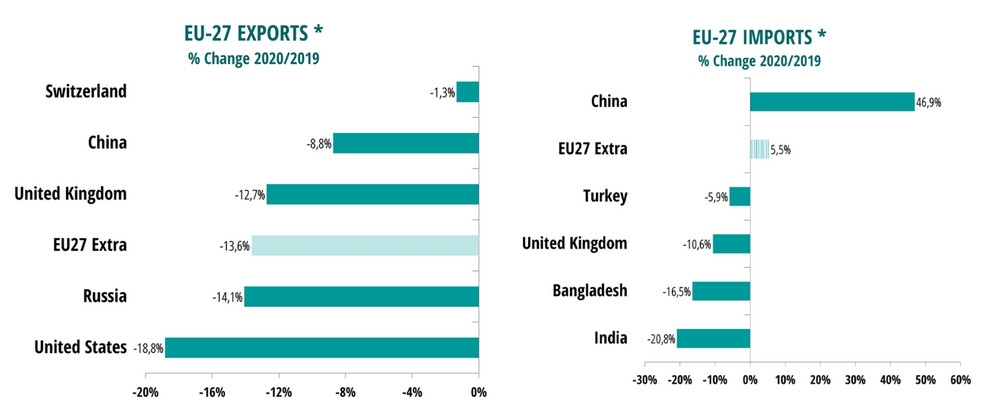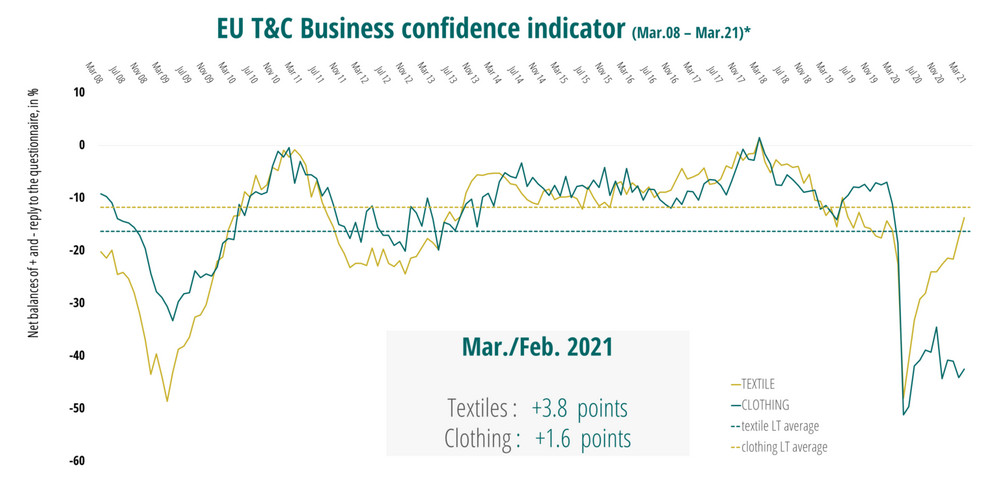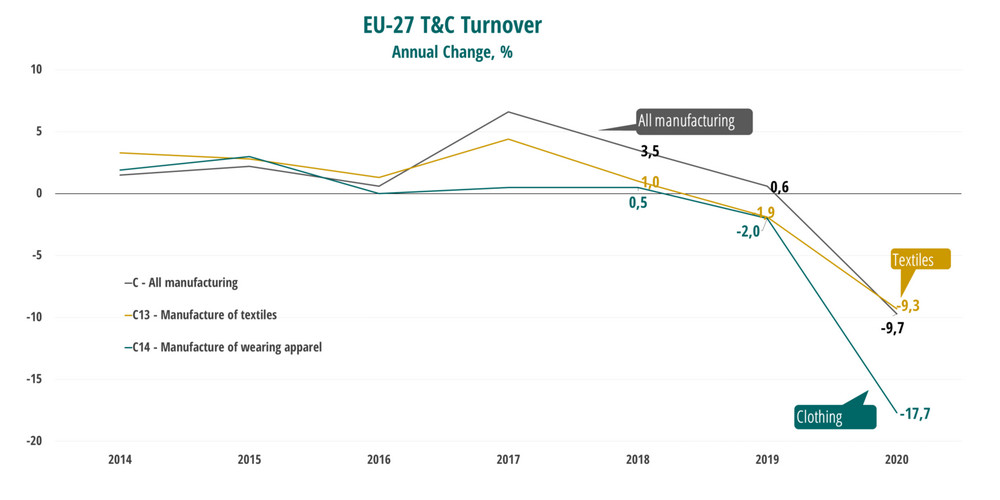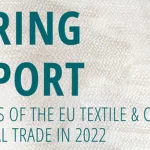The EU Textiles strategy is expected for the 3rd quarter of 2021; while it is expected to put a strong focus on sustainability and circularity, EURATEX insists the strategy should take a broader perspective and ensure long term competitiveness of this essential pillar of the European economy.
Brussels – On the occasion of releasing its Quarterly Economic Update, EURATEX is concerned that the Covid19 crisis may soon be followed by disruptions in our global supply chains, affecting the competitiveness of our industry.
Economic data up to December 2020 reflect a dramatic contraction in demand and production of textile and clothing items, caused by the COVID-19 pandemic. Over the full year 2020, the EU turnover fell by -9.3% in textiles and by -17.7% in clothing, compared with 2019. The crisis was particularly felt in the middle of the year (with production losses over 50%). Towards the last quarter of 2020, business activity recovered in the textile industry (+1.6% as compared with the previous quarter), while it further deteriorated in the clothing sector (-6.8%), as a result of the decline in consumption expenditure and the slowdown in non-essential activities.

Looking at trade performance, T&C extra-EU exports slipped back by -13.6% in 2020. The majority of EU top-10 customers experienced a steep decline in 2020. EU imports increased by +5.5% in 2020. However this increase was mostly due to the import of personal protective equipment (including facemasks), especially from China (increase from EUR 1 billion in 2019 to EUR 20 billion in 2020).
Looking forward, the EU Business Confidence* indicator of March 2021 gained momentum, with a confirmed upward trend in the textile industry (+3.8 points), and a modest recovery in the clothing industry (+1.6 points). Also, the employment expectations indicator saw a robust increase.

However, these signs of recovery are jeopardized by recent turmoil in the T&C supply chain. Raising prices of raw materials (textile fibres, dyestuffs,…) and transport costs, negative impact of CO2 prices and political turmoil in some important sourcing countries (China, Myanmar) create uncertainty, adding to the challenges of the corona pandemic.
On that basis, 2021 will be a critical year for the competitiveness of the European T&C industry. A forward-looking EU textiles strategy, which offers the right policy mix and support instruments for our SMEs, is essential in this context.
EURATEX Director General Dirk Vantyghem commented on these recent developments: “European textiles and apparel companies have shown great resilience and flexibility during this pandemic, but continue to face global challenges. Now is the time to design a modern framework to support these companies in their transition process. We need to focus on promoting innovation, offering support towards digitalisation, creating robust supply chains and ensure a level playing field.”
The EU Textiles strategy is expected for the 3rd quarter of 2021; while it is expected to put a strong focus on sustainability and circularity, EURATEX insists the strategy should take a broader perspective and ensure long term competitiveness of this essential pillar of the European economy.
 The EU Textiles strategy is expected for the 3rd quarter of 2021; while it is expected to put a strong focus on sustainability and circularity, EURATEX insists the strategy should take a broader perspective and ensure long term competitiveness of this essential pillar of the European economy.
The EU Textiles strategy is expected for the 3rd quarter of 2021; while it is expected to put a strong focus on sustainability and circularity, EURATEX insists the strategy should take a broader perspective and ensure long term competitiveness of this essential pillar of the European economy.




